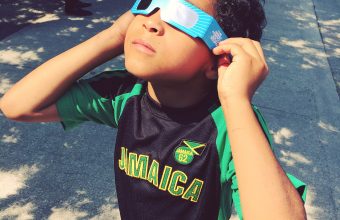We’re willing to bet you have things in your home that you can use to help your young child develop the foundations needed for school. These household items will help develop skills such as listening and speaking, sharing and taking turns, vocabulary development, print, alphabet and number awareness, hand and finger coordination and creative thinking.
Here are 7 common items that you can use to help build the foundation for early learning:
- Kitchen Utensils: Play ‘the name game’ with any type of kitchen utensil while cooking together. Show the child a mixing bowl and ask, ‘What do we call this? What shape is the bowl? What colour is the bowl?’ When setting the table, encourage your child to name familiar things, for example, ‘Let’s put a fork and knife at each place. Do you think we need a spoon?’
- Cookbooks: The next time you cook or bake, involve your child – read your recipe out loud, while pointing out numbers, pictures and colours. Ask your child to help you mix, pour, knead, measure, decorate, wash etc.
- Food: Food isn’t just for eating, of course! Use various fruit to help teach your child how to match shapes and colours, as well as practice counting and sorting. Pour uncooked rice or short-cut pasta into various size food storage containers for instant music shakers to discover different sounds.
- Newspapers, Flyers, Junk Mail and Packaging: Before throwing away newspapers, flyer (and even junk mail or packaging) keep some handy for you and your child to have reading material they can easily relate to. Seeing pictures of everyday items they recognize will help them learn to recognize letters and words too. You can even help your child cut out and paste pictures and words to create little picture books, for example, ‘My Favourite Snacks’.
- Storybooks: This is an obvious choice, but it’s important to go beyond just reading a storybook from start to finish. Let your child hold the book and turn the pages. Broaden their vocabulary by taking a word in the book and saying it in a second language. Deepen their understanding of the story by asking them to predict what happens next or relating it to your child’s own personal experiences (‘Remember when we’?’)
- Old Cell Phone: Still have that old cell phone lying around? Use it to encourage make-believe conversations with your child. Play and pretend to have conversations with characters from your favourite stories’talk to Goldilocks to find out how she felt when she met the three bears.
- Touch-Screen Mobile Devices: Smartphones and tablets can be effective education tools as long as you make them an extension of learning rather than a replacement. Using an e-book version of a favourite hard-copy story offers animations that add playful actions that support a story line, spark additional discussion and provide visual support for action words. When choosing apps, opt for ones that offer open-ended possibilities, guided instructions and encourage parent engagement.
Tagged under: Learning,toddler,household items,teaching,toddler learning,educational activities toddlers
Category: parenting






